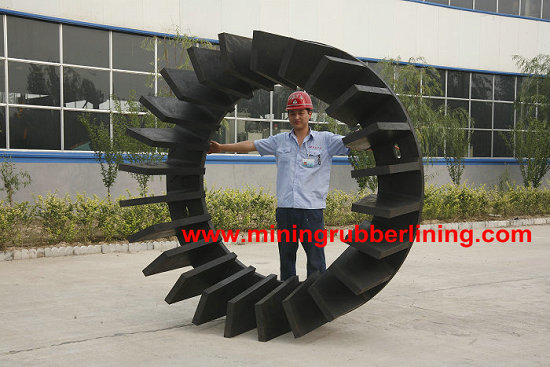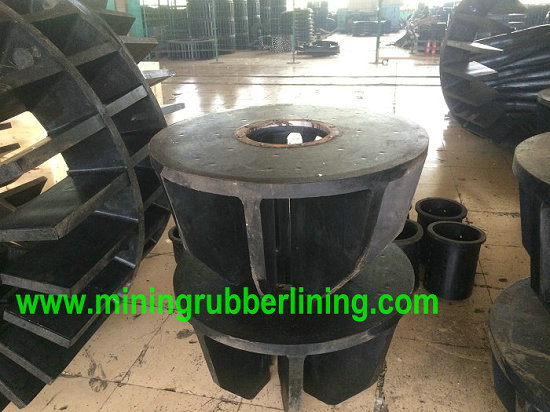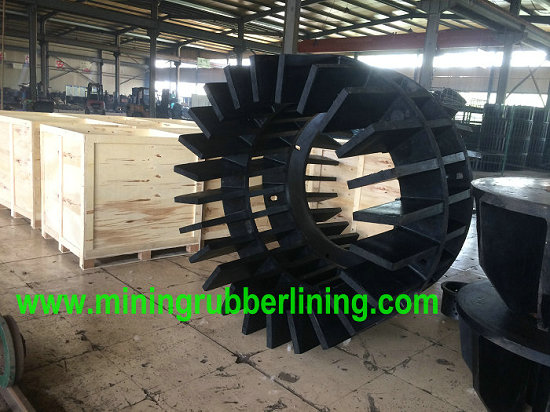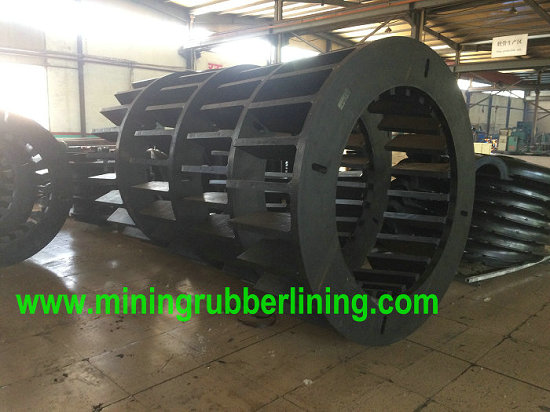Rubber Stators ( Rubber Lined Stator , Rubber Coated Stators ) Is a Stationary Part Of An Electric Motor Or Generator.Rubber Stator Consists Of Rubber Stator Core, Rubber Stator Winding And Machine Seat.The Main Function Of The Rubber Stator Is To Produce The Rotating Magnetic Field, While The Main Function Of The Rotor Is To Be Cut By The Magnetic Force Line In The Rotating Magnetic Field And Then Produce (Output) Current.
Basic Concepts
The Rubber Stator Is The Stationary Part Of The Motor.Rubber Stator Consists Of Rubber Stator Core, Rubber Stator Winding And Machine Seat.The Main Function Of Rubber Stator Is To Produce Rotating Magnetic Field, While The Main Function Of Rotor Is To Be Cut By Magnetic Force Line In Rotating Magnetic Field And Then Produce (Output) Current.
Rubber Stator Composition
The Rubber Stator Consists Of a Seat, a Rubber Stator Core, a Coil, And Other Structural Parts That Fix These Parts. The Seat Is Used To Fix The Iron Core, For The Suspension Generator, The Seat Is Used To Bear The Full Weight Of The Rotating Part; The Core Is Part Of The Magnetic Circuit Of The Generator; The Coil Forms The Circuit Of The Generator.
Seat
The Machine Seat Is Usually Cast Iron, The Large Asynchronous Motor Seat Is Usually Welded With Steel Plate, And The Machine Seat Of Micro Motor Is Cast Aluminum. There Are Heat Dissipation Bars Outside The Machine Seat Of The Closed Motor To Increase The Heat Dissipation Area, And The End Cover Of The Machine Seat Of The Protective Motor Is Opened With Ventilation Holes, So That The Air Inside And Outside The Motor Can Be Directly Convection, So As To Facilitate The Heat Dissipation.
The Main Function Of The Generator Seat Is To Act As The Supporting Structure Of The Rubber Stator Iron Core Lamination, To Bear The Torque Of The Rubber Stator And To Transfer It To The Bottom Foot; To Form The Channel Of Cooling Gas, To Form The Supporting Structure Of The Bearing, Frame And Cooler.
Rubber Stator Core
Rubber Stator Core Is The Main Magnetic Circuit Of Rubber Stator, Together With The Installation And Fixing Parts Of Rubber Stator Winding.The Rubber Stator Core Is Composed Of Fan-Shaped Punching Sheet, Ventilation Slot Sheet, Toothed Compression Plate, Tension Bolt, Support Block, Positioning Reinforcement And Other Components.
Coil Coil
Most Of The Rubber Stator Windings Of Large Hydrogenerators Are Strip Coil (Also Called Rod) Double-Layer Wave Winding, Which Is Characterized By Less End Connection And Convenient Removal And Replacement. For Water-Cooled Generators, Single-Layer Wave Windings Can Also Be Selected, Which Can Simplify The Cooling Water Pipeline.
Rubber Stator Wiring
The Rubber Stator Has Two Wiring Modes, One Is 4-Wire Type, The Rotor String Is Connected Between 2 Rubber Stator Windings, The Other Is 2-Wire Type, The Two Rubber Stator Windings Are Connected Well And Then Connected With The Rotor String After Connecting With The Rotor String ,(The 2 Leads Of 4-Wire Diagonal Are Connected Together). The Two Wiring Modes Are Different, But Can Be Universal. There Are Two Ways To Lead The Wire: One Is Soft Wire Extraction; The Other Is By The Plug On The Skeleton To Draw, This Kind Of Winding To Retain The Skeleton.
Common Malfunctions
Common Faults Of Rubber Stator Include Winding Breaking, Short Circuit, Grounding, Poor Contact Between Pull Spring And Brush Grip, Burning Of Pull Spring, Loosening Of Fixed Bolt Of Rubber Stator, Etc.
Components And Principles
Generator Electricity Is One Of The Most Important Energy Sources In Modern Society. Generators Are Mechanical Devices That Convert Other Forms Of Energy Into Electricity, First Produced During The Second Industrial Revolution And Made By German Engineer Siemens In 1866. They Are Driven By Turbines, Steam Turbines, Diesel Engines Or Other Power Machines, Converting The Energy Generated By Water Flow, Air Flow, Fuel Combustion Or Nuclear Fission Into Mechanical Energy To The Generator And Then From The Generator To Electrical Energy.
Classification Of Generators: Dc Generator, Alternator, Synchronous Generator, Asynchronous Generator (Rarely Used), Alternator Classification: Single Phase Generator, Three Phase Generator.
Working Principle: The Generator Is Mainly Composed Of Rubber Stator, Rotor, End Cover, Brush, Seat And Bearing.The Rubber Stator Consists Of a Seat, a Rubber Stator Core, a Wire-Wrapped Winding, And Other Structural Parts That Fix These Parts. The Rotor Consists Of a Rotor Core, a Rotor Pole (With a Magnetic Choke). Magnetic Pole Winding), Slip Ring (Also Known As Copper Ring, Collector Ring), Fan And Rotating Shaft And Other Components.
Rubber Stator And Rotor Of The Generator Are Connected And Assembled By The Bearing, Seat And End Cover, So That The Rotor Can Rotate In The Rubber Stator, And The Rotor Becomes a Rotating Magnetic Field By Sliding Ring Into a Certain Excitation Current, And The Rubber Stator Coil Makes The Motion Of Cutting Magnetic Force Line, Thus Generating Inductive Potential.
Because There Is An Open Circuit At The Connection Between The Brush And The Rotor, The Rotor Rotates In a Certain Direction, Resulting In Alternating Current, So The Home Circuit And Other Circuits Are Alternating Current, Referred To As Alternating Current. The Frequency Of Output Current Of China's Power Grid Is 50 Hz.









